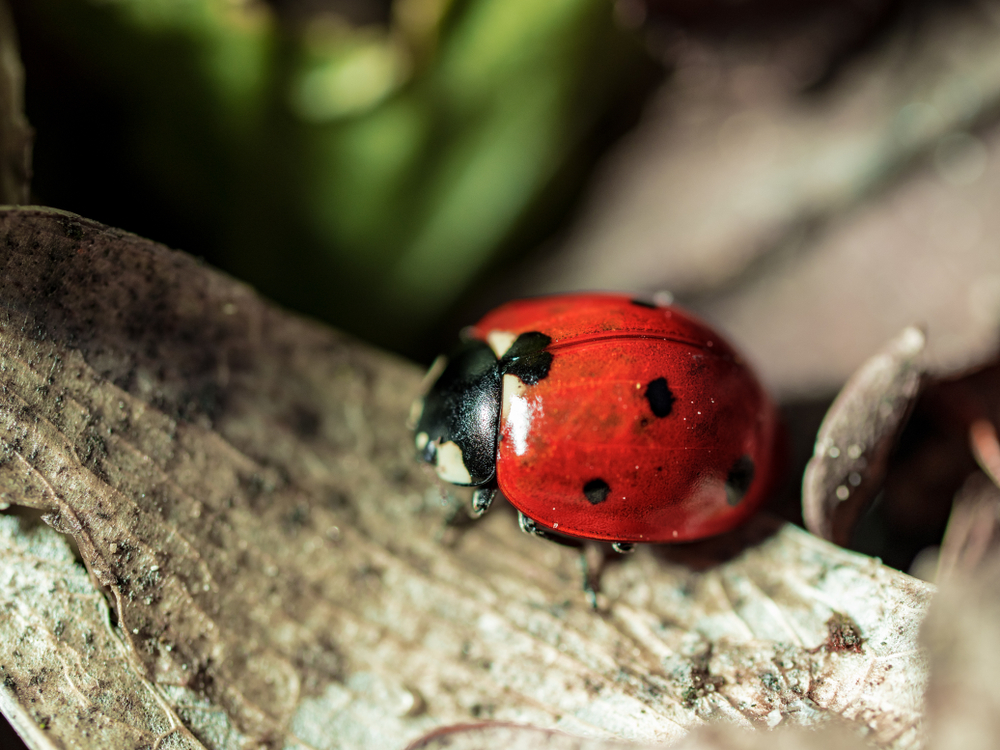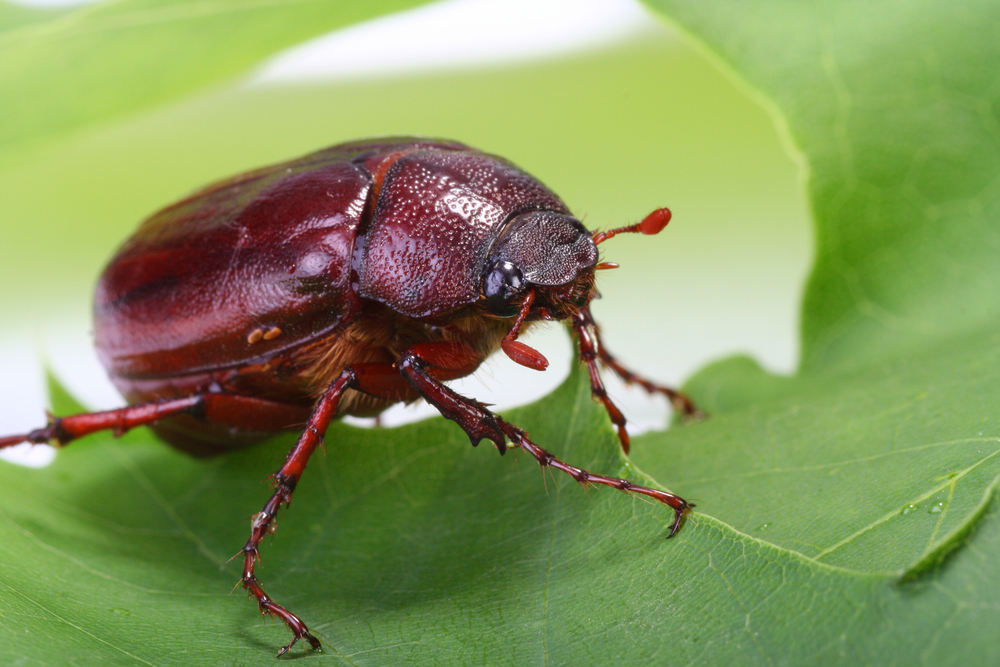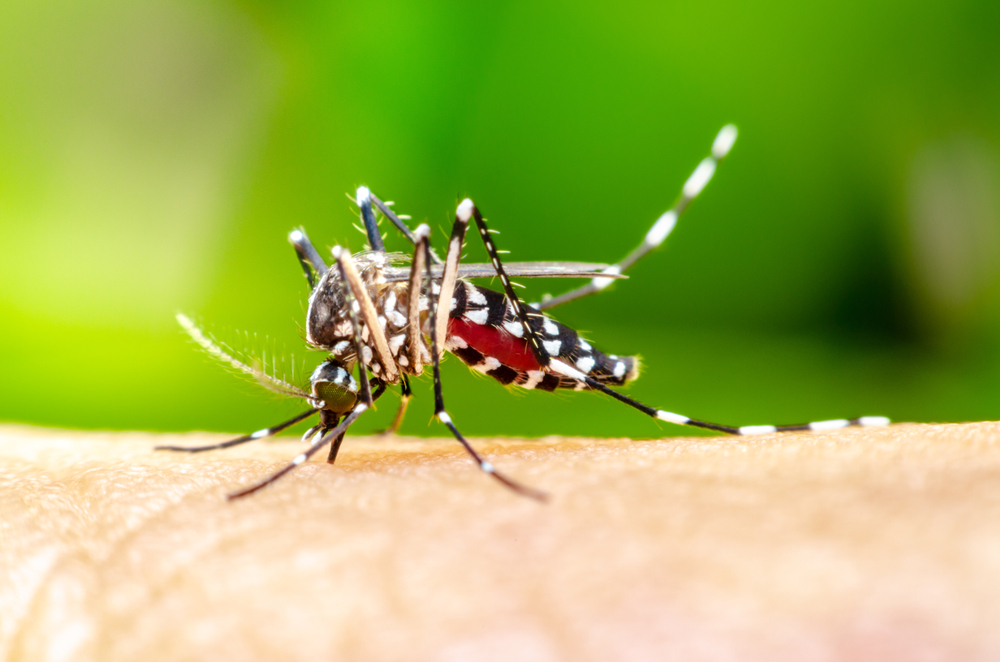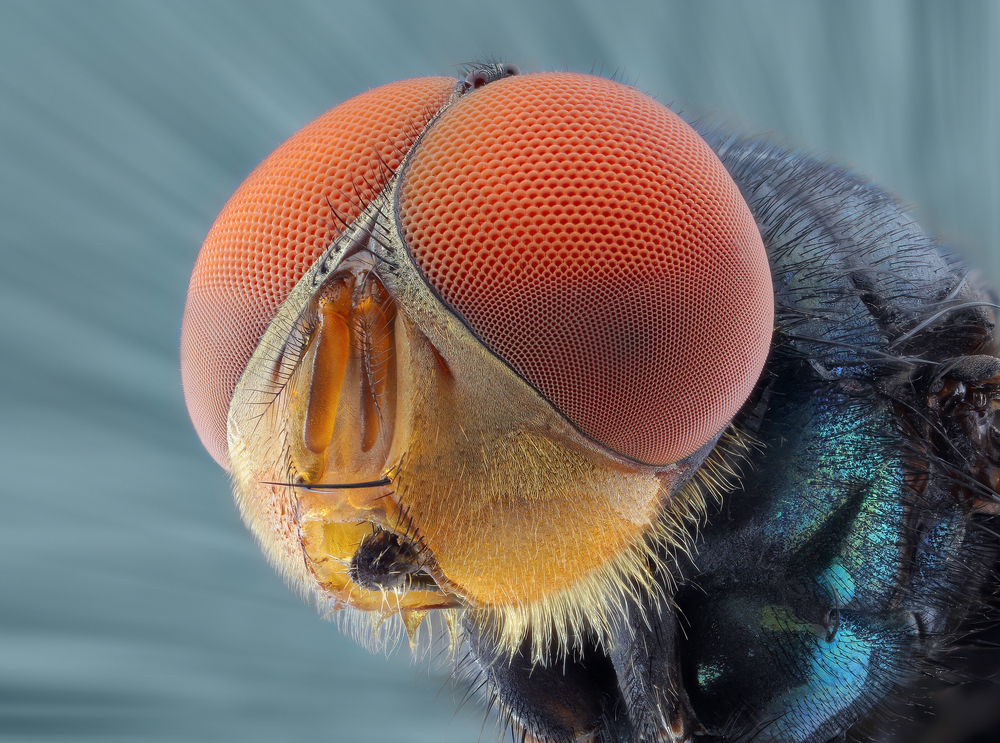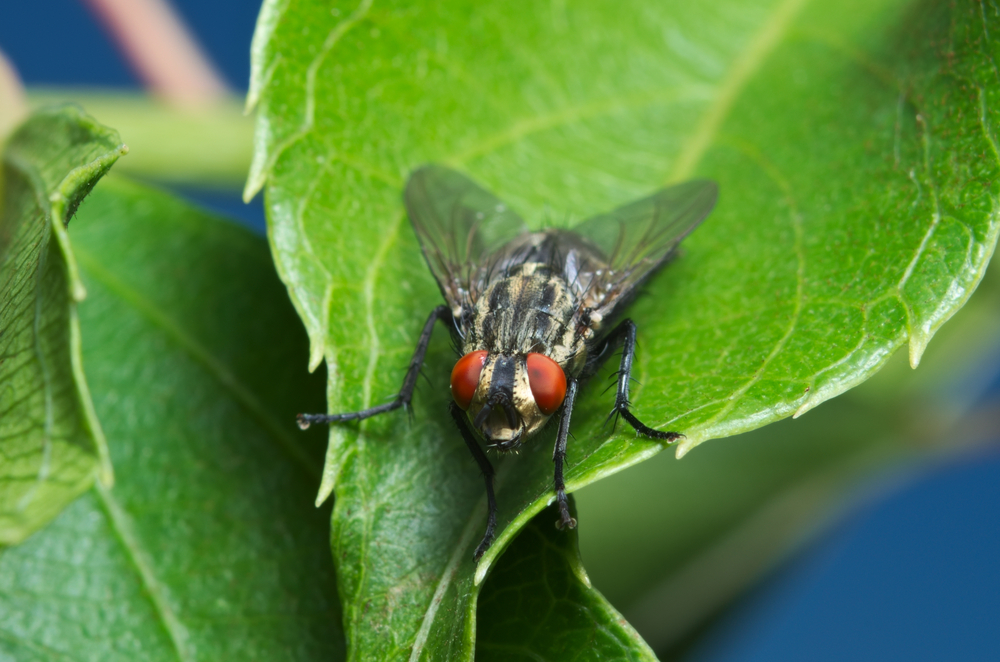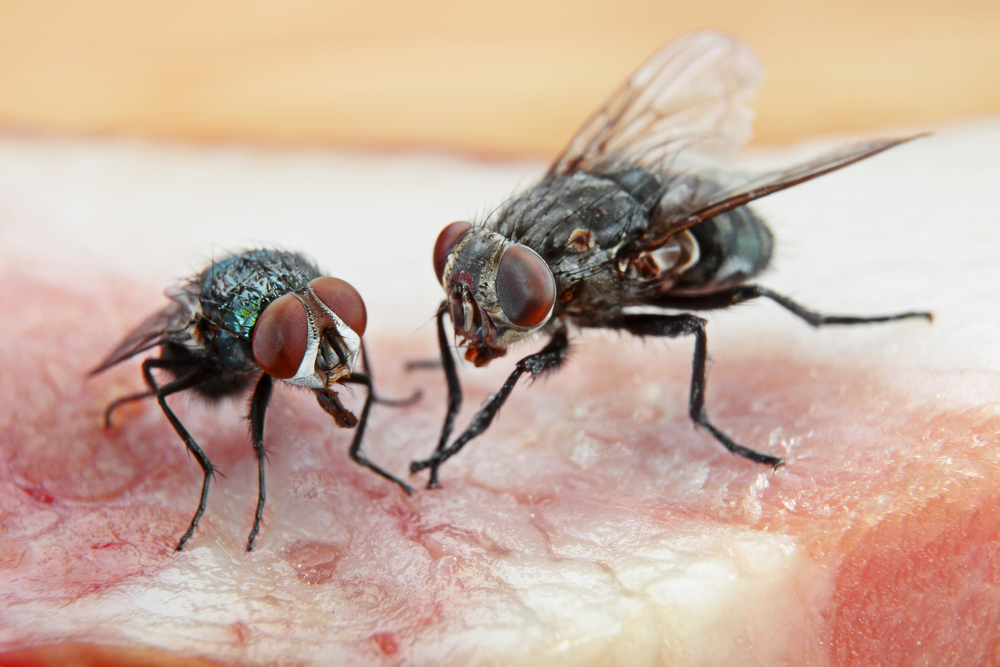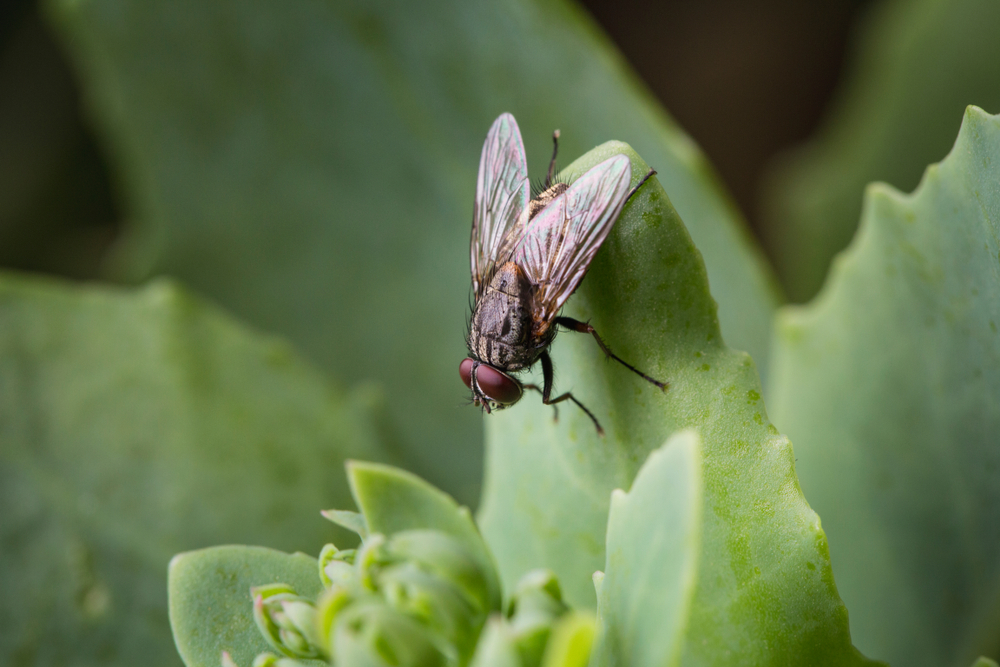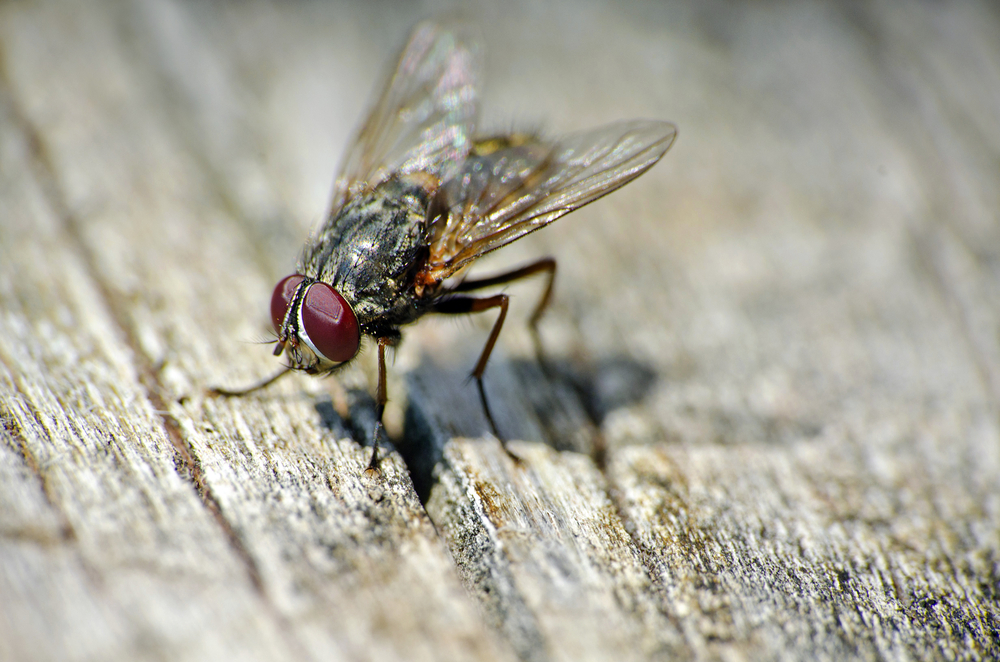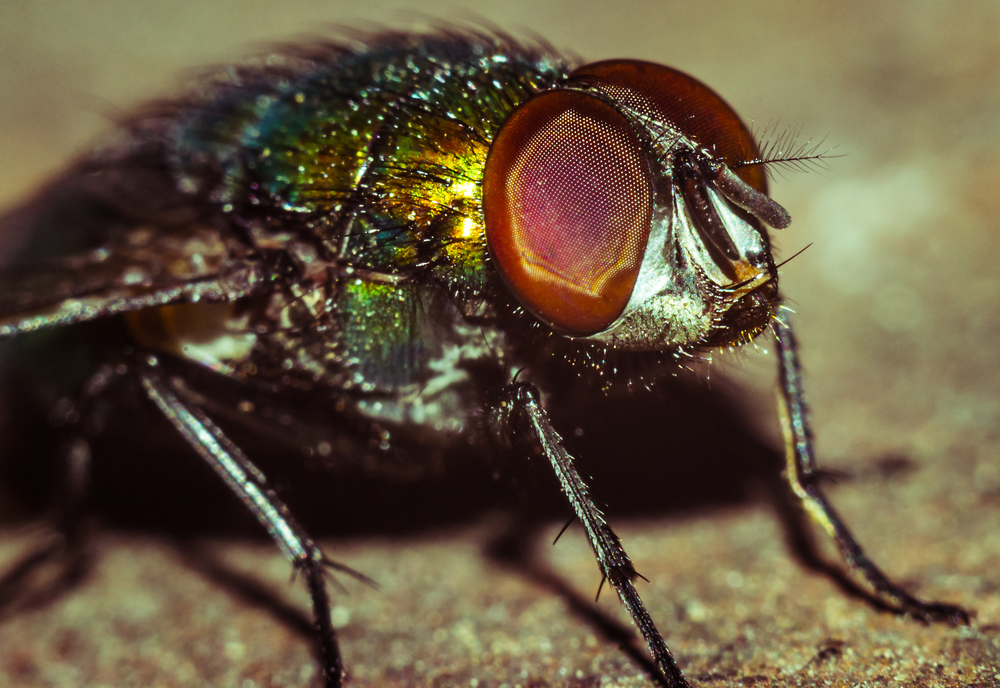About
The Housefly, scientifically known as Musca domestica, belongs to the Animal Kingdom’s phylum Arthropoda, class Insecta, and order Diptera, which includes other species like mosquitoes and gnats. As one of the most common insects globally, the Housefly thrives in various habitats, particularly human settlements, where it finds ample food sources and breeding grounds.
Measuring about 6 to 7 millimeters in length, Houseflies have gray thoraxes and abdomens with four black stripes. Their compound eyes facilitate exceptional vision, enabling them to detect movement and locate food efficiently. Houseflies possess sponging mouthparts, allowing them to feed on liquid substances such as decaying organic matter, garbage, and animal feces.
These flies are notorious disease vectors, carrying pathogens such as bacteria, viruses, and parasites on their bodies from unsanitary environments to food and surfaces, contributing to the spread of illnesses like diarrhea, cholera, and dysentery. Despite their small size, Houseflies reproduce rapidly, with females laying hundreds of eggs in suitable breeding sites.
Conservation Concerns
Due to their ubiquitous nature and pest status, Houseflies are not typically subject to conservation concerns or assessments by organizations like the International Union for Conservation of Nature (IUCN). However, they pose significant public health risks, especially in regions with inadequate sanitation and waste management systems. Effective pest control measures, including proper sanitation practices, use of insecticides, and trapping methods, are essential for managing Housefly populations and minimizing their impact on human health. Nonetheless, their adaptability and high reproductive rates make complete eradication challenging, necessitating ongoing efforts to control their populations and reduce associated health risks.
Physical Characteristics
The housefly, scientifically known as Musca domestica, is one of the most common and widely distributed insects across the globe. Recognized for its close association with humans and domestic environments, the housefly plays a significant role in both pollination and the spread of diseases. Here’s a detailed look at the physical characteristics of the housefly:
Size
- Body Length: Houseflies typically measure about 0.2 to 0.3 inches (6 to 7.5 millimeters) in length.
- Weight: They are very lightweight, with an adult housefly weighing approximately 12 milligrams (0.0004 ounces).
Physical Characteristics
- Color and Body: The housefly’s body is generally gray, with the thorax displaying four longitudinal dark stripes on the dorsal (top) side. Their bodies are divided into three segments: the head, thorax, and abdomen.
- Head: The head of a housefly features a pair of large compound eyes that cover most of its head, providing a wide field of vision. Between these eyes are three smaller simple eyes (ocelli) which are used to detect light intensity. Male houseflies have closer-set eyes than females.
- Mouthparts: Houseflies have a unique mouthpart designed for a liquid diet, known as a proboscis. This sponging mouthpart is capable of soaking up food like a sponge. They can only ingest liquid food, so they regurgitate saliva on solid food to pre-digest and liquify it before consumption.
- Wings: A housefly has one pair of membranous wings that are clear with a slight yellowish tint at times. Their wings beat about 200 times per second, allowing for their characteristic hovering and swift movements. They also have a pair of halteres, which are modified hind wings that function as gyroscopes, aiding in balance and flight control.
- Legs: They possess six legs, each ending in a claw and sticky pads (pulvilli), which allow them to walk on smooth surfaces and ceilings.
The ubiquity and adaptability of the housefly make it a subject of both scientific study and public health concern, given its role in spreading diseases. Despite their small size, houseflies have a significant impact on the environment and human health, illustrating the complex interplay between humans and insects in shared environments.
Reproduction
The reproductive cycle of the housefly, Musca domestica, is a fascinating process influenced by environmental conditions and the availability of suitable breeding sites. Here’s an overview:
Breeding Season: Houseflies breed prolifically in warm and moist environments, with their reproductive activity peaking during the spring and summer months when temperatures are optimal for egg development and larval growth.
Mating Behavior: Male houseflies actively seek out females for mating, often engaging in aerial pursuits and territorial behaviors to secure mates. Once a male successfully courts a female, copulation occurs, typically lasting for a brief period.
Courtship and Copulation: Courtship rituals in houseflies may involve physical interactions, vocalizations, or pheromone signaling between males and females. Once a female is receptive, copulation occurs, during which the male transfers sperm to the female’s reproductive tract.
Egg Laying: After mating, a female housefly seeks suitable oviposition sites to lay her eggs. These sites are typically moist organic matter, such as decaying food waste, animal feces, or compost piles, where the emerging larvae will find ample food for development.
Egg Development and Hatching: Housefly eggs undergo rapid development, with hatching occurring within hours to days, depending on environmental conditions. The newly hatched larvae, known as maggots, emerge from the eggs and begin feeding on the surrounding organic matter.
Larval Development: Housefly larvae undergo several molts as they grow and develop, feeding voraciously on decaying organic material. They play a crucial role in nutrient recycling and decomposition processes, contributing to ecosystem health.
Pupation: As housefly larvae reach maturity, they seek dry and sheltered locations to pupate. The pupal stage is a period of transformation, during which the larva undergoes metamorphosis to become an adult fly.
Adult Emergence: After completing the pupal stage, adult houseflies emerge from their pupal cases and take to the air. They seek mates and suitable breeding sites to continue the reproductive cycle, perpetuating the population of houseflies.
Life Cycle Dynamics and Population Control: Understanding the reproductive cycle of houseflies is essential for implementing effective control measures to manage populations in residential, commercial, and agricultural settings. Strategies such as sanitation, waste management, and biological control can help reduce housefly populations and minimize their impact on human health and hygiene.
Lifespan
The housefly (Musca domestica) is a common and widespread insect known for its role as a vector of disease and nuisance pest. Understanding its lifespan and the threats it faces is crucial for effective pest management strategies.
Lifespan in the Wild: In the wild, the lifespan of a housefly varies depending on environmental conditions, availability of food, and the presence of predators and pathogens. Generally, adult houseflies live for about 15 to 25 days, although some may survive for up to a month under favorable conditions. Houseflies undergo complete metamorphosis, starting as eggs, then progressing through larval and pupal stages before emerging as adults.
Lifespan in Captivity: In captivity, such as in laboratory settings or controlled environments, houseflies may have slightly longer lifespans compared to those in the wild. With access to consistent food sources, optimal temperatures, and protection from predators, adult houseflies may live for up to 30 days or more under ideal conditions.
Threats to the Housefly:
- Predation: Houseflies are preyed upon by various organisms, including spiders, birds, bats, and other insects. Predators play a significant role in regulating housefly populations, although their impact may vary depending on local ecosystems and environmental conditions.
- Parasitism: Housefly larvae are susceptible to parasitoid wasps and other parasitic organisms that lay their eggs on or inside the fly larvae. These parasitoids develop at the expense of houseflies, reducing their populations in the wild.
- Pathogens: Houseflies can harbor and transmit various pathogens, including bacteria, viruses, and protozoa, which pose risks to human and animal health. Diseases spread by houseflies include cholera, dysentery, typhoid fever, and salmonellosis. Controlling housefly populations is essential for minimizing the spread of disease.
- Pesticides: Insecticides are commonly used to control housefly populations, especially in agricultural settings and food production facilities. However, overuse or misuse of pesticides can lead to the development of resistance in houseflies and harm non-target organisms, including beneficial insects and pollinators.
- Poor Sanitation: Houseflies thrive in environments with abundant organic matter, such as garbage, decaying food, and animal waste. Poor sanitation practices contribute to increased housefly populations, posing risks to public health and hygiene.
- Climate Change: Climate change can impact housefly populations by altering temperature and precipitation patterns, influencing their distribution, abundance, and seasonal activity. Warmer temperatures and changes in weather patterns may favor the proliferation of houseflies in some regions.
Addressing threats to housefly populations requires integrated pest management strategies, including sanitation measures, biological control methods, and judicious use of pesticides. Educating the public about the importance of sanitation and hygiene practices can also help reduce housefly populations and minimize health risks associated with their presence.
Eating Habits
The housefly, scientifically known as Musca domestica, is a common and widespread fly species found in close association with human habitations. Understanding its eating habits sheds light on its role as a scavenger and potential vector of diseases. Let’s explore the feeding habits of the housefly.
Diet: Houseflies are opportunistic feeders with a varied diet consisting of organic matter, including decaying organic material, garbage, feces, and other decomposing substances. While they primarily feed on liquid food sources, they can also consume solid foods by regurgitating digestive enzymes onto them, liquefying the food, and then ingesting it.
Feeding Behavior: The feeding behavior of houseflies is characterized by their ability to locate and consume a wide range of food sources:
- Sponging: Houseflies have sponging mouthparts, which consist of soft, fleshy structures that they use to soak up liquid food sources. They are attracted to moist or decaying organic matter, where they can feed on the liquefied substances.
- Regurgitation: When feeding on solid foods, houseflies regurgitate digestive enzymes onto the food, breaking it down into a liquid form. They then use their sponging mouthparts to ingest the liquefied food.
- Scavenging: Houseflies are efficient scavengers and often frequent garbage dumps, compost heaps, animal waste, and other sources of organic decay in search of food. They are also known to feed on sugary substances such as nectar, fruit juices, and syrups.
Ecological Impact:
- Houseflies play a crucial role in the decomposition of organic matter and nutrient recycling within ecosystems by breaking down dead and decaying material.
- However, they can also pose health risks as potential vectors of diseases, as they can pick up pathogens from their feeding sites and transfer them to human food or surfaces through contact.
Control Measures:
- Controlling housefly populations often involves sanitation practices to eliminate breeding sites and reduce food sources that attract them.
- Insecticide sprays, traps, and baits are commonly used to manage housefly populations in and around human habitations.
- Proper waste management, including the disposal of garbage and animal waste, can help minimize housefly infestations and reduce the risk of disease transmission.
Uniqueness
The Housefly, scientifically known as Musca domestica, is one of the most ubiquitous and widely recognized insects around human habitations worldwide. Here are some key aspects that make the Housefly unique:
Adaptability and Ubiquity: Houseflies have an incredible ability to adapt to various environments, particularly those altered by humans. They are found almost everywhere people are, making them one of the most widely distributed insects on earth.
Reproduction and Development: Houseflies are prolific breeders. A female can lay approximately 500 eggs in her lifetime, spread over several batches of about 75 to 150 eggs. These eggs hatch into larvae, commonly known as maggots, within a day, and the entire lifecycle from egg to adult can be completed in as little as a week under optimal conditions.
Disease Transmission: One of the more notorious characteristics of houseflies is their potential to spread diseases. They are known vectors for a wide range of pathogens, including bacteria, viruses, and parasites. Houseflies pick up pathogens from garbage, sewage, and other decaying matter, which they visit to feed and lay eggs, and then transfer them to human food and surfaces via their legs and mouthparts.
Feeding Habits: Houseflies have mouthparts that are adapted for a liquid diet. They are unable to chew solid foods; instead, they regurgitate saliva onto solid foods to dissolve them and then suck up the resulting solution. This process also aids in the spread of the pathogens they carry.
Sensory Perception: Houseflies have compound eyes that provide them with a wide field of vision. Each eye is made up of thousands of individual lenses, allowing them to detect even the slightest movements around them. This helps them evade attempts to swat them. They also have antennae that are highly sensitive to chemical signals, which guide them to their food sources.
Flight: Houseflies are agile fliers, capable of making quick in-flight turns. They can beat their wings up to 200 times per second, and they use this rapid wing beat to escape from predators and quickly land on various surfaces.
Ecological Role: Despite their reputation as pests, houseflies play significant roles in nature. They are important decomposers in the ecosystem, helping break down organic waste. Additionally, they serve as food for a variety of predators, including birds, amphibians, and other insects.
Control Challenges: Due to their rapid breeding cycle and adaptability, controlling housefly populations can be challenging. This is compounded by their resistance to many insecticides, which has increased over the years due to heavy use of chemical controls.
The Housefly’s ability to thrive in close association with humans, coupled with their impact on health and their ecological role, makes them a unique subject of study in entomology and public health. Their omnipresence in human environments highlights the importance of effective waste management and sanitation practices to control their populations and reduce the spread of diseases.
Sources
- Burnie, David & Wilson, Don, Animal, Smithsonian Institute, Washington DC.
- Hickman et al, Integrated Principle of Zoology, McGraw Hill, Boston.
































































